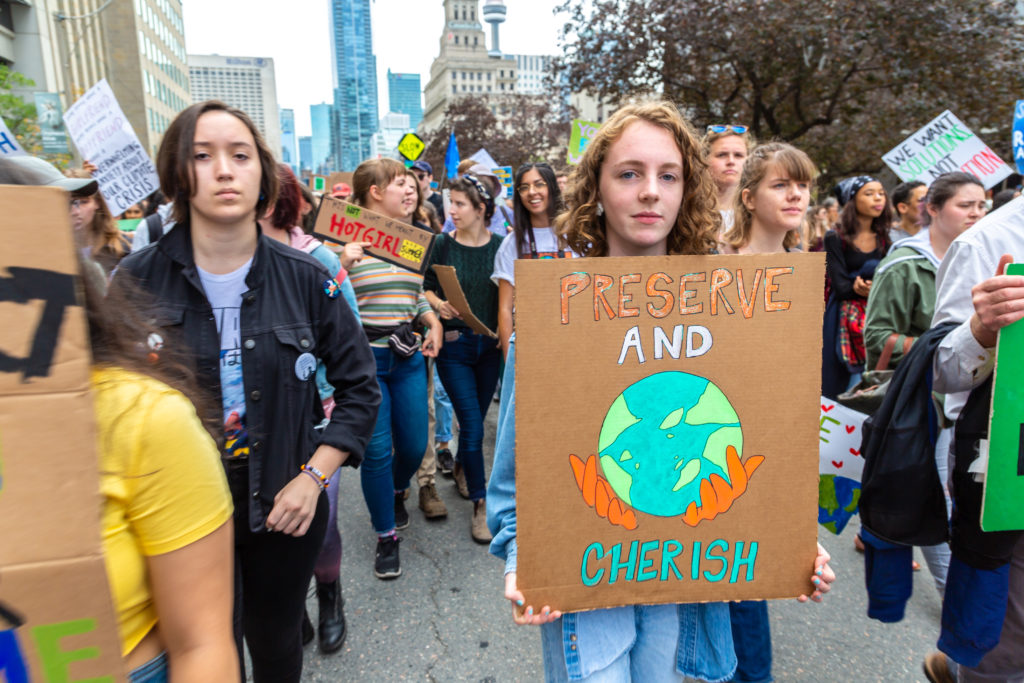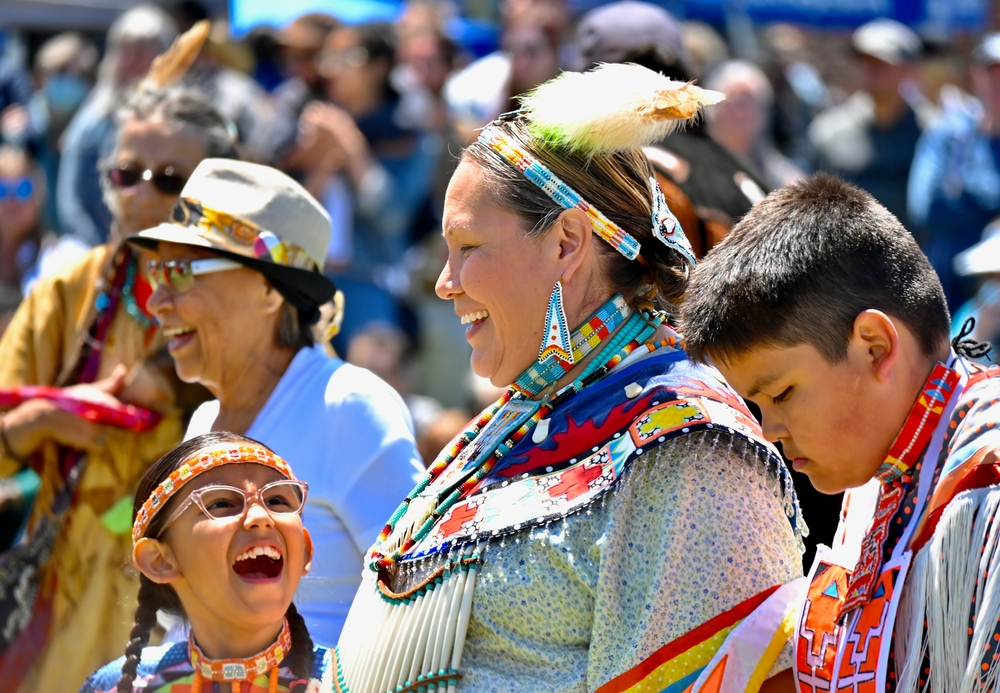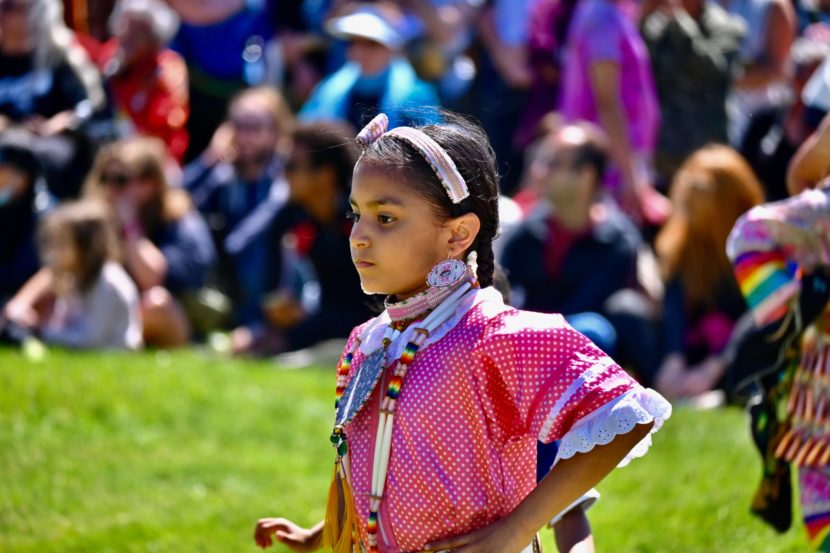While the climate crisis is experienced by all, marginalized groups are often disproportionately impacted by its negative effects. This is the reality for Indigenous children living on reserves in Canada. The climate crisis not only threatens Indigenous children’s right to health and safety but also results in their loss of land, culture, and livelihood. Canada must take steps to ensure that Indigenous children’s human rights are being fulfilled.
Indigenous children’s vulnerability to the impacts of the climate crisis
Systemic forces have left Indigenous children living on reserves in Canada distinctively vulnerable to the impacts of climate change as they have a uniquely intimate relationship with their land and environment and live in geographic areas that are subject to rapid climate change (NCCIH, 2022). When the climate crisis is combined with existing factors like social inequalities, it can exacerbate human rights violations such as the right to health, water, food, and environment (CFC, 2022).
Effects of climate crisis on Indigenous children in Canada
Colonization by the Government of Canada, which forcibly displaced Indigenous Peoples to lands (“reserves”) with environmental disadvantages, has resulted in them experiencing disproportionate physical vulnerabilities. (Tsosie, 2017). These less desirable lands are more prone to harsh seasonal events, such as ice breakup, water pollution and wildfires.
For example, the Kashechewan First Nation in Northern Ontario must repeatedly evacuate its community members in the spring when the Albany River swells its banks. In 2016 this led to over 75% of their members being temporarily displaced (Quirt, 2021). The vulnerability of Indigenous children living on reserves is compounded by existing infrastructural deficits (Parkes et. al, 2010). Vulnerable wastewater systems and increased exposure to environmental contaminants have led to hundreds of boil water advisories across Canada (NCCIH, 2022).
Indigenous Peoples often live off their land and rely on traditional practices such as hunting, fishing, and gathering for their food source. Climate change is altering the timing of seasons and migration patterns of wildlife which reduces the availability of food and other natural resources. For example, the warming of bodies of water and changes in precipitation have resulted in the loss of wildlife populations such as caribou.
In addition, Indigenous children living on reserves have immunization rates 20% lower and rates of Tuberculosis 8 to 10 times higher than the general Canadian population (Parkes et. al, 2010). As child-acute bronchitis linked to wildfires is on the rise, Indigenous children living on reserves are more vulnerable to heat-related illnesses and respiratory problems from smoke exposure caused by climate change (CFC, 2022).
Beyond physical health, Indigenous children living on reserves have an increased risk of mental illness, such as anxiety and depression, caused by climate change (Rodriguez, 2021). Indigenous children have strong cultural ties to the land and therefore experience eco-anxiety more acutely than non-Indigenous children. The damage and loss of land resulting from flooding and wildfires has prevented many cultural traditions from being practiced (NCCIH, 2022).
Canada’s inaction on climate crisis affects Indigenous children
While Canada struggles to reconcile with Indigenous Peoples by acknowledging the violations committed in residential schools, the government places less attention on the current human rights violations Indigenous children face stemming from climate change.
In 2021, the Committee on the Rights of the Child invited interested parties to comment on the concept note of a general comment on Children’s Rights and the Environment with a Special Focus on Climate Change (Committee on the Rights of the Child, 2023). Although the Government of Canada recognized that the Committee of the Rights of the Child can be helpful in providing guidance on how to consider and meet their obligations under the International Convention on the Rights of the Child, they disagreed with many of the recommendations.
The Government of Canada argued that the “the scope of the right to life cannot extend so far as to impose a positive obligation on States to protect children from the harm resulting from any reasonably foreseeable but distant threat” (Government of Canada, 2021). Canada argued that the International Convention on the Rights of the Child “does not apply to the unborn or to future generations that are not yet alive” (Government of Canada, 2023). In its response and comments, the Government of Canada did not address the concerns specific to Indigenous children.
In March 2023, the United Nations special rapporteur on the rights of Indigenous peoples stated that “Indigenous Peoples continue to face serious obstacles to achieving full enjoyment of their individual and collective rights” in Canada (Calí-Tzay, 2023). Following this statement, Amnesty released its 2022-23 report calling out Canada for the persistence of long-term boil water advisories, lack of access to education and health care and anti-Indigenous racism (Amnesty International, n.d.).
Youth legal actions on climate change in Canada

Canadian children have attempted to assert their legal right to a healthy environment for themselves and future generations by advocating their case in courts. Between 2018 and 2020, various youth activist brought claims against the Canadian federal and provincial governments (Environnement Jeunesse, 2019).
These actions claimed that the governments’ failed to protect the rights of young people under the Canadian Charter of Rights and Freedoms by inadequately taking action on the harms of climate change (La Rose v Canada, 2020). While these cases highlighted Canada’s inadequate climate mitigation and the disproportionate impact on youth, both cases were dismissed.
An ongoing action brought by seven Indigenous and non-Indigenous youth has become the first case in Canada where a court acknowledged that the climate crisis may threaten the life, liberty and security of the person and violate equality rights (Ecojustice, 2021). The case was brought back to court in January 2024 and a ruling is expected within the year (Greenpeace, 2024).
A greener future for Indigenous children
The climate crisis, coupled with the colonial pressure that has deconstructed traditional systems of culture and knowledge aimed at protecting their Indigenous children, has left these children more vulnerable than ever. Fulfilling their rights requires a commitment to address the historical and ongoing injustices while working collaboratively with Indigenous communities.
The Government of Canada and provincial governments have a responsibility to rectify the inequality that they created. They must empower Indigenous children by providing meaningful information that promotes traditional knowledge in climate change adaptation and mitigation strategies. This includes ensuring access to adequate healthcare services including trained physicians who can identify the risks for Indigenous children associated with climate change.
A final step that Canada must take is to update legislation to recognize and address the harmful impacts of the climate crisis. Because of the reluctance of courts to affirm positive obligations, it is up to the governments to recognize the inordinately disproportionate and discriminatory impacts of climate change on those living on reserves, by recognizing the right to a healthy environment for children today, as well as for future generations.

Humanium is working hard to raise awareness of the impact of climate change on all children through our projects supporting different local communities worldwide. Join Humanium in youth advocacy – by making a donation, volunteering or becoming a member.
Written by Kathleen Tereposky (a non-Indigenous author living on the traditional unceded, unsurrendered territory of the Anishinabe Algonquin People)
Bibliography:
Amnesty International. (n.d.). Amnesty International Report 2022/23: The state of the world’s human rights. Retrieved from Amnesty International at https://www.amnesty.org/en/documents/pol10/5670/2023/en/, accessed on March 13, 2024.
Calí-Tzay, M. J. (2023). Visit to Canada – End of Mission Statement. Retrieved from Office of the United Nations High Commissioner for Human Rights at https://www.ohchr.org/sites/default/files/documents/issues/indigenouspeoples/sr/statements/eom-statement-canada-sr-indigenous-2023-03-10.pdf, accessed on March 13, 2024.
CFC. (2022). Raising Canada. Retrieved from Children First Canada at chrome-extension://efaidnbmnnnibpcajpcglclefindmkaj/https://childrenfirstcanada.org/wp-content/uploads/2022/09/RC2022_CFC_RC-Report_09-02.pdf, accessed on March 13, 2024.
Committee on the Rights of the Child. (2021). Call for comments on the draft general comment on children’s rights and the environment with a special focus on climate change. Retrieved from United Nations at https://www.ohchr.org/en/calls-for-input/2023/call-comments-draft-general-comment-childrens-rights-and-environment-special, accessed on March 13, 2024.
Committee on the Rights of the Child. (2023). General comment No. 26 (2023) on children’s rights and the environment with a special focus on climate change. United Nations, accessed on March 13, 2024.
Ecojustice. (2021). Case summary: Mathur, et al. v. Her Majesty the Queen in Right of Ontario. Retrieved from Ecojustice at https://www.ecojustice.ca/wp-content/uploads/2019/11/Ontario-Climate-Case-Backgrounder.pdf?x64512, accessed on March 13, 2024.
Government of Canada. (2021). Comment on the Concept Note on the Draft General Comment No. 26 on Children’s Rights and the Environment with a Special Focus on Climate Change, accessed on March 13, 2024.
Government of Canada. (2023). Draft General Comment No. 26 on children’s rights and the environment with a special focus on climate change: Comments by the Government of Canada, accessed on March 13, 2024.
Greenpeace. (2024, January 15). The Mathur Case: Youth are pushing for climate action in the courts. Retrieved from Greenpeace Canada at https://www.greenpeace.org/canada/en/story/62998/the-mathur-case-youth-are-pushing-for-climate-action-in-the-courts/, accessed on March 13, 2024.
NCCIH. (2022). Climate Change and Indigenous Peoples Health in Canada. Retrieved from National Collaborating Centre for Indigenous Health at https://www.nccih.ca/en/, accessed on March 13, 2024.
Parkes et. al. (2010). Warming up to the embodied context of First Nations child health: A critical intervention into and analysis of health and climate change research. Retrieved from the International Public Health Journal, 477-485, accessed on March 13, 2024.
Quirt, M. (2021, October 14). Why We Must Address the Colonial Dimension of Climate Migration. Retrieved from The Conversation at https://theconversation.com/why-we-must-address-the-colonial-dimension-of-climate-migration-169218, accessed on March 13, 2024.
Rodriguez, J. (2021, October 7). Eco-anxiety: Young Canadians report climate change impact on their mental health. Retrieved from CTV News at https://www.ctvnews.ca/climate-and-environment/eco-anxiety-young-canadians-report-climate-change-impact-on-their-mental-health-1.5615253, accessed on March 13, 2024.
Tsosie, R. A. (2017). Indigenous People and Environmental Justice: The Impact of Climate Change. Retrieved from the University of Colorado Law Review, 1625-1677, accessed on March 13, 2024.


